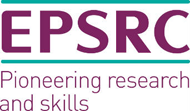Jade Scott
Jade Scott
Jade joined the CDT in June 2015 having previously completed a Masters in Physics at the University of Liverpool.
CDT PhD Project:
Antiferromagnetic materials for optical recording
Supervisors:
Professor Robert Bowman, Queen's University Belfast
Professor Stephen McVitie, University of Glasgow
The ever increasing societal demand for greater data storage is posing new scientific and engineering challenges. Currently, to go above 1.5Tb/inch2 areal density will require the further development and implementation of heat assisted magnetic recording (HAMR). This will see the integration of photonic elements such as laser, waveguides and plasmonic antennae into the existing magnetic recording head to deliver light to the disk surface for heating. In the longer term these developments envisioned for HAMR could facilitate of new magnetic recording techniques. One technique that has the potential to become the next ultrafast, high density recording mechanism is All Optical Magnetic Switching (AOMS). AOMS uses a femtosecond laser pulse to switch the magnetic media, on the picosecond timescale, without the use of an external magnetic field; this is compared to present day magnetic recording that uses an external magnetic field to switch media on typically the nanosecond timescales.
Over the past decade it has been shown that AOMS can be achieved most commonly in Rare Earth Transition Metal (RE-TM) alloys such as GdFeCo. RE-TM alloys are ferrimagnetic structures consisting of an amorphous surface with two sublattices that have dissimilar saturation magnetisations that are aligned antiparallel.
The crucial material parameters that allow AOMS to occur are that the material must consist of two dissimilar sublattices that are antiferromagnetically coupled and have different demagnetisation times with the application of heat. It is the reaction of the sublattices to the application of a heat pulse in the form of a femtosecond laser pulse that govern whether or not the material can be switched optically.
Although, there are several restrictions to using RE-TM alloys in that they are expensive materials to deposit, they can degrade quite easily when heated and they are susceptible to oxidation. Therefore, other materials that are cheaper and more robust need to be investigated. This is the direction of the project. We have identified transition metal based synthetic ferrimagnet SFiM as a technologically feasible media for AOMS. SFiM are constructed from two magnetic transition metal films that are strongly exchanged coupled via a non-magnetic spacer layer. The magnetic layers are typically a few to tens of nanometers thick and the coupling layer could be from Angstroms to a few nanometers. The overall aim of the project is to scope a series of feasible SFiM through a combination of materials search and exploitation of magnetic simulations exploiting ab-initio codes such as VAMPIRE. The project most directly falls under the EPSRC Physical sciences theme, and specifically, light matter interactions, magnetism & magnetic materials.





